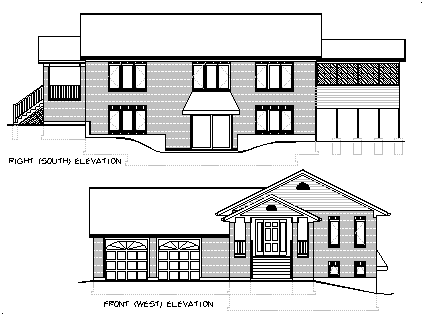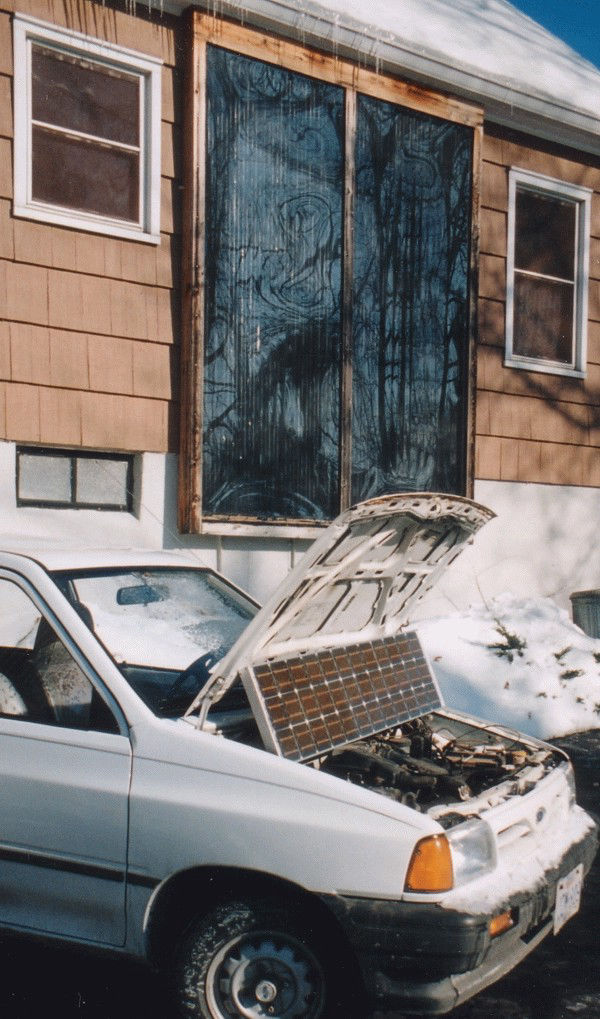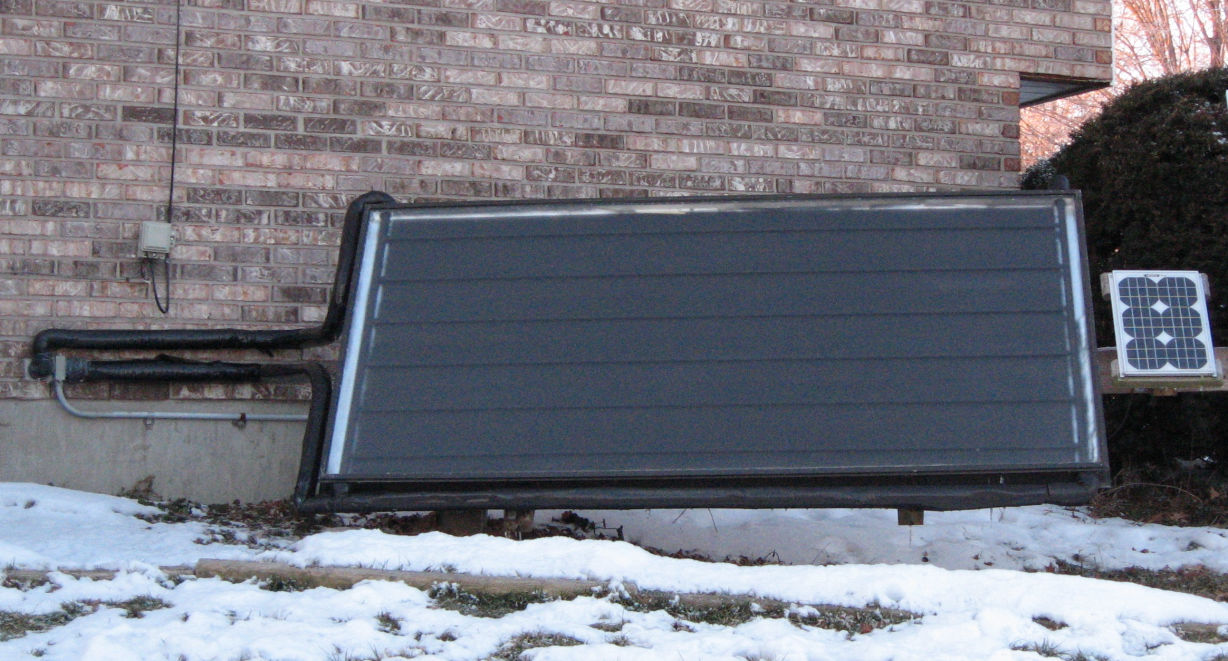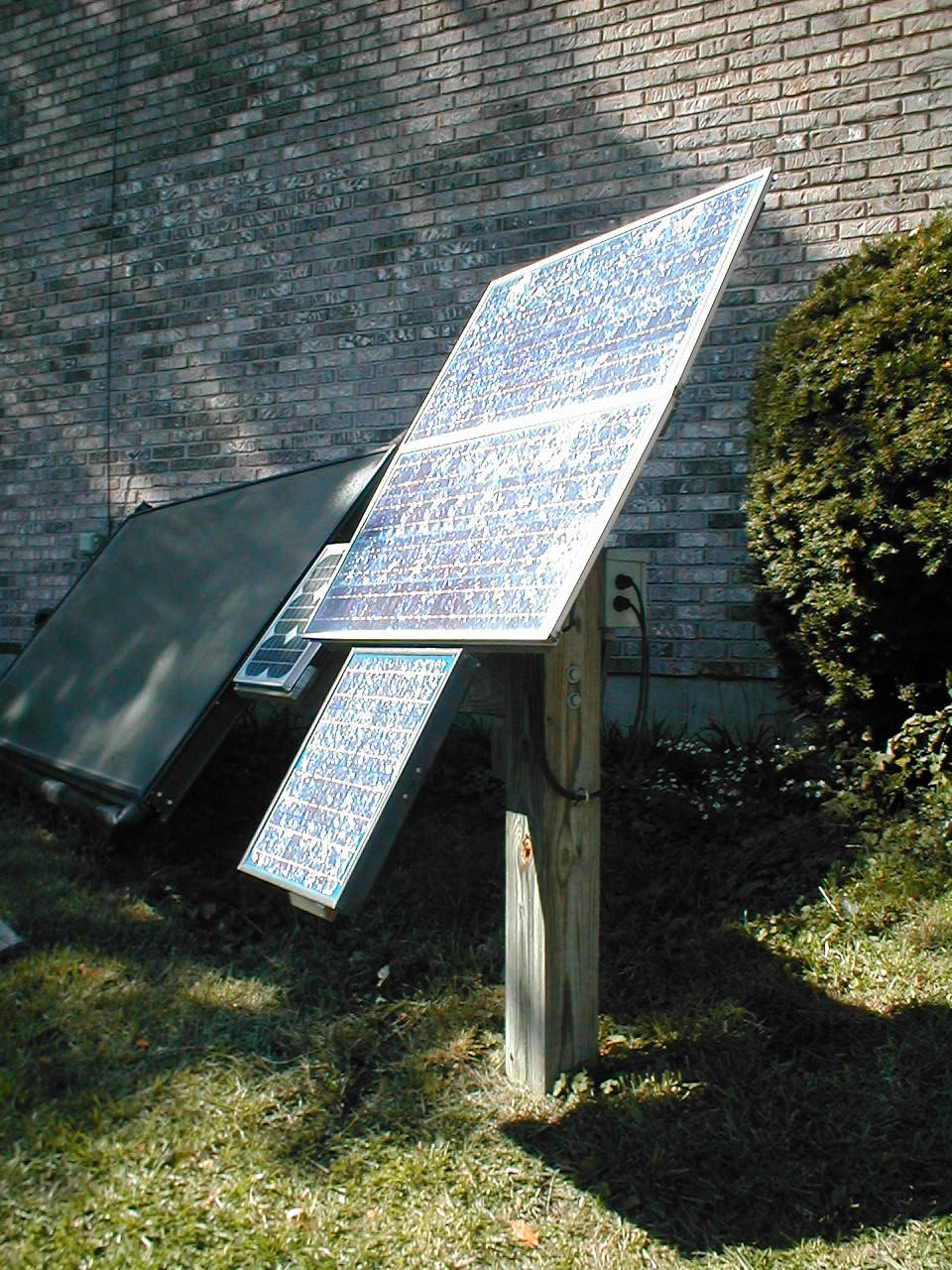

In passive solar, solar heat and light are collected and delivered with little or no hardware. Instead, a passive solar floorplan, its building geometry and its envelope materials do all the work of collecting, storing, retaining and distributing the solar energy.
In passive daylighting, optimally positioned windows and roof apertures admit daylight without movement. In a passive solar electric device or structure, solar electric components are integrated into intentionally oriented exterior surfaces such that they collect solar energy automatically, without movement to track or reflect the sun. A passive solar water heater not only is positioned to capture the sun's rays without movement, but it is also positioned relative to the water heater or other storage tank such that hot water rises, or thermosyphons, up into the tank, instead of relying on a pump. Most such passive solar structures and devices are designed from day one to perform this way, but some are remodeled to incorporate their passive solar features later. Sometimes this is called "integrated" solar. Integrated solar electric systems in a building are sometimes called "building integrated photovoltaics" or BIPVs.




A solar water heating system can significantly lower water-heater energy bills, especially when the water heater is electric and hot water usage is high. Besides one or more collectors outside, a system includes a heat exchanger, usually 1 or 2 pumps, some controls and gauges, and a well insulated storage tank. For small systems, this storage tank can sometimes be the water heater, since it is usually needed to supplement the solar heat. One pump usually moves antifreeze from the heat exchanger to and from collector. Another circulates water from the tank through the heat exchanger and back to the tank after it's heated. All the pipes should be insulated.
An active solar water heating system can also be used to heat a swimming pool so that it is useful earlier in the spring and later in the fall than normal. In most northern climates, there's usually enough sun in spring, summer and fall that a backup heater is not needed for 3-season pool use. A solar pool heater for 3-season use may not need heat exchangers or antifreeze. It is possible to have a single system to heat domestic water and the pool or spa.
Solar electricity, called "photovoltaics" or PV, also relies on collectors. PVs produce about 10 watts per square foot in full sun, starting out as DC voltage. More power is produced the longer and more directly the panels are exposed to the sun. PVs are usually very expensive in the short-term compared with utility electricity. However, PVs can be cheaper, even sometimes in first-cost, when locations are far enough from power lines that there are major costs to extend utility lines. After initial purchase, PV electricity costs almost nothing, except occasional battery replacement. PV panels can last 40 or more years.

All but the smallest and grid-intertied PV systems may have as many batteries as collectors. There are many other specialized accessories, including a charge controller to protect batteries from overcharging, an inverter to convert DC power to AC, fuses and disconnects to protect people and devices as with utility electricity systems, amp and volt gauges, and special synchronizing equipment if the system is grid-intertied (or tied to the electric utility's power system).
Finally, when considering all the various solar design and technology options, unless cost-effectiveness is not important, it’s advisable to value and implement the simplest and cheapest kinds of solar energy first, like daylighting and outdoor clothes drying before solar electric-powered lights and dryers. Applying the simplest, least-cost and most energy-conserving solutions typically results in much lower costs for our energy supplies.

John F Robbins, CEM / CSDP
859.363.0376
john@johnfrobbins.com
www.johnfrobbins.com
3519 Moffett Rd
Morning View, KY USA
41063-8748

John F. Robbins is also at LinkedIn and Facebook